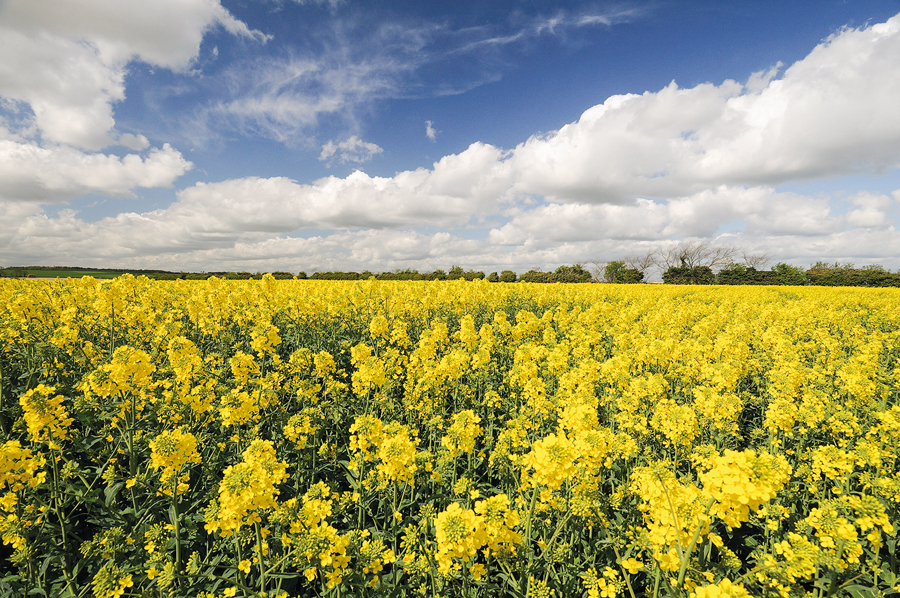OSR varieties for highlighted at Cereals 2019
5th July 2019
Winter oilseed rape variety selection is always a theme on NIAB’s stand at Cereals, and last month’s event was no different.
Winter oilseed rape variety selection is always a theme on NIAB’s stand at Cereals, and last month’s event was no different.
As ever, oilseed rape variety specialist Simon Kightley had produced his analysis for maximising yield and spreading the risk at Cereals 2019, based on published ratings and personal observations, however this year it was NIAB’s centre manager for the West, Mike Perry, who led Farmers Guide through the options.
Tried and tested
When considering the so-called ‘established’ oilseed varieties on the Recommended List (four years or more in trials), Mr Perry suggested that the top yielders, although separated by a percentage point or two, were all on a par in terms of yield – whether conventional or hybrid – and so other factors have to come in to play when considering selection for this autumn’s drillings.
“Flea beetle is, of course, the key talking point for oilseed rape growers and it does need to be emphasised that a decent seedbed, with moisture, and good seed-to-soil contact are vital to get varieties established as soon as possible after drilling,” he commented, adding that, in general, hybrids do show better autumn vigour.
For the East & West region, low biomass Windozz (yielding 104 per cent), Alizze and Wembley (both 102) were selected as Mr Kightley’s ‘tried and tested’ hybrids, while Alizze was also selected as a key hybrid option for the North (100) – its good performance against light leaf spot highlighted.
For the conventional varieties in the tried and tested category (East & West), Elgar (103) – also with good resistance to light leaf spot; Flamingo (102) – good against light leaf spot and with high oil content; and Nakita (101) – good light leaf spot resistance, short and with high oil content.
Elevation (104) – short and stiff; and Barbados (102) – good disease resistance, were selected as the conventional varieties for the North.
Promising newcomers
Those that have been in trials for three years, and labeled as ‘promising newcomers’ for the East & West on Mr Kightley’s chart included conventional Aspire (104) – short and stiff, good against light leaf spot and TuYV resistant; and Ballad (104) – another high yielder, also good against light leaf spot. “There’s clear evidence now that we’ve had TuYV in trials without realising to what extent, and so varieties such as Aspire that have resistance have performed better than others,” commented Mr Perry.
“Pyrethroids are less effective now and aphid control has been waning for several years meaning that genetic resistance to TuYV is becoming an increasingly important factor.”
Hybrid promising newcomers highlighted for the East & West included top yielding PT275 (104); DK Expansion (102) and George (102) – both very good against stem canker.
Aspire starred again for the conventionals in the North (106) while hybrid DK Exsteel (104) – is good for light leaf spot and very good for stem canker.
Top Candidates
While acknowledging that Candidate variety data is relatively limited following only two years in trials, Mr Perry suggested that conventional variety Acacia (110) and hybrid Aurelia (109) were varieties to watch out for across East & West and North regions (106 and 103 respectively).
Acacia he said had a high gross output, was a short and stiff variety while Aurelia was another to offer TuYV resistance and was looking very good against stem canker and light leaf spot.
Another ‘A’ was Aardvark (106), a high gross output conventional Candidate for the North.
Meanwhile, Candidate hybrid variety Crocodile (106) made the selection chart due to its resistance to club root.
“Club root resistant varieties in the past were significantly lower yielding than standard conventional and hybrid types, but Crome (102 E&W, 103 N) broke that mould recently and others like Crocodile, which is similar agronomically to Crome, look set to follow.
“Club root resistant varieties are one of the tools to deal with the disease but longer (5-year) rotations and correct soil pH levels are also important considerations in the overall battle to keep on top of it,” said Mr Perry.
In terms of Clearfield varieties, he said that a gap in yield difference remained between the top performing Clearfield type PT279CL – 97 (E&W) and 93 (N) – and standard varieties, but they were continuing to deliver value in cruciferous weed-affected areas, as well as reducing the threat of erucic acid contamination from HEAR volunteers.

